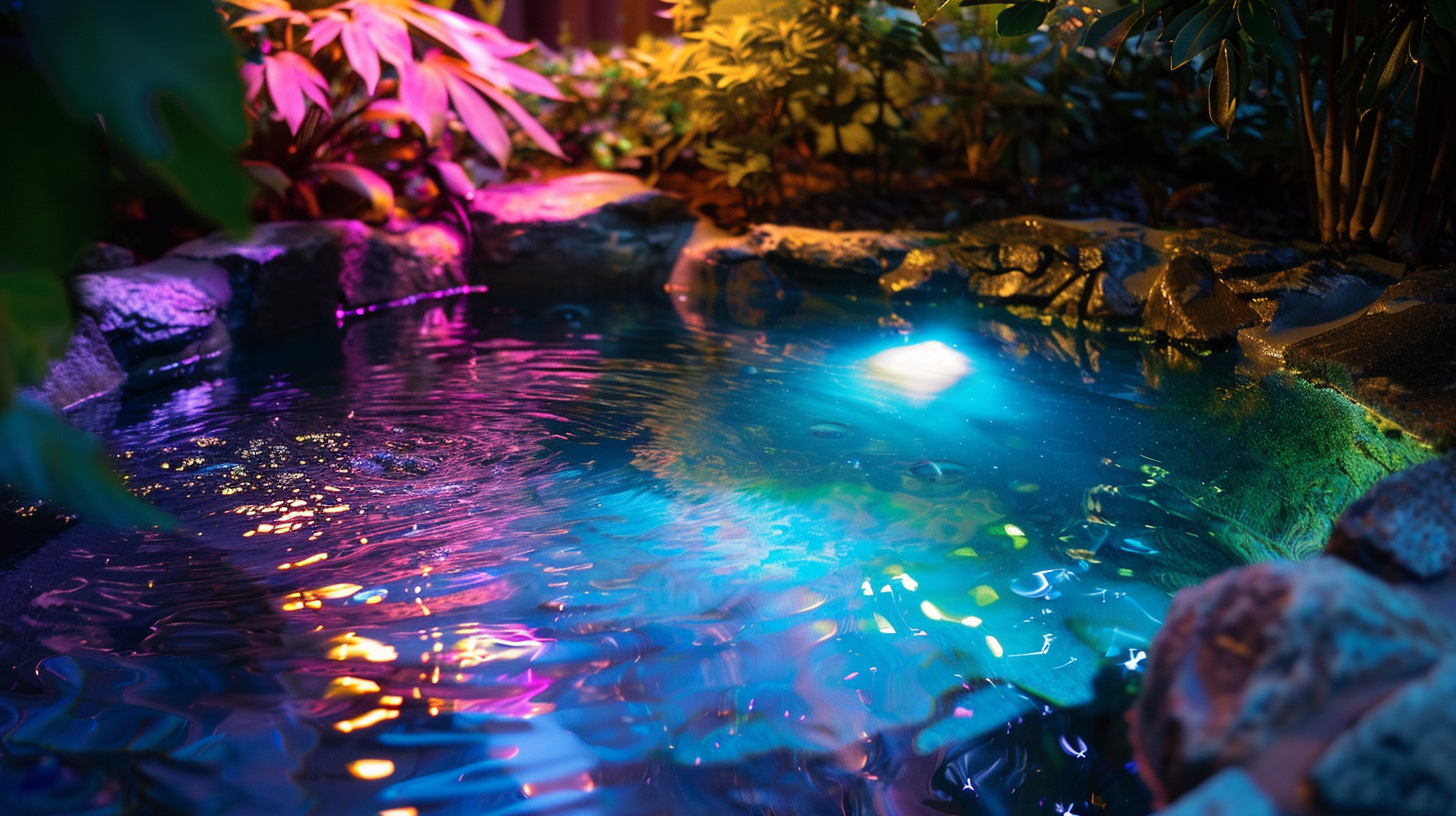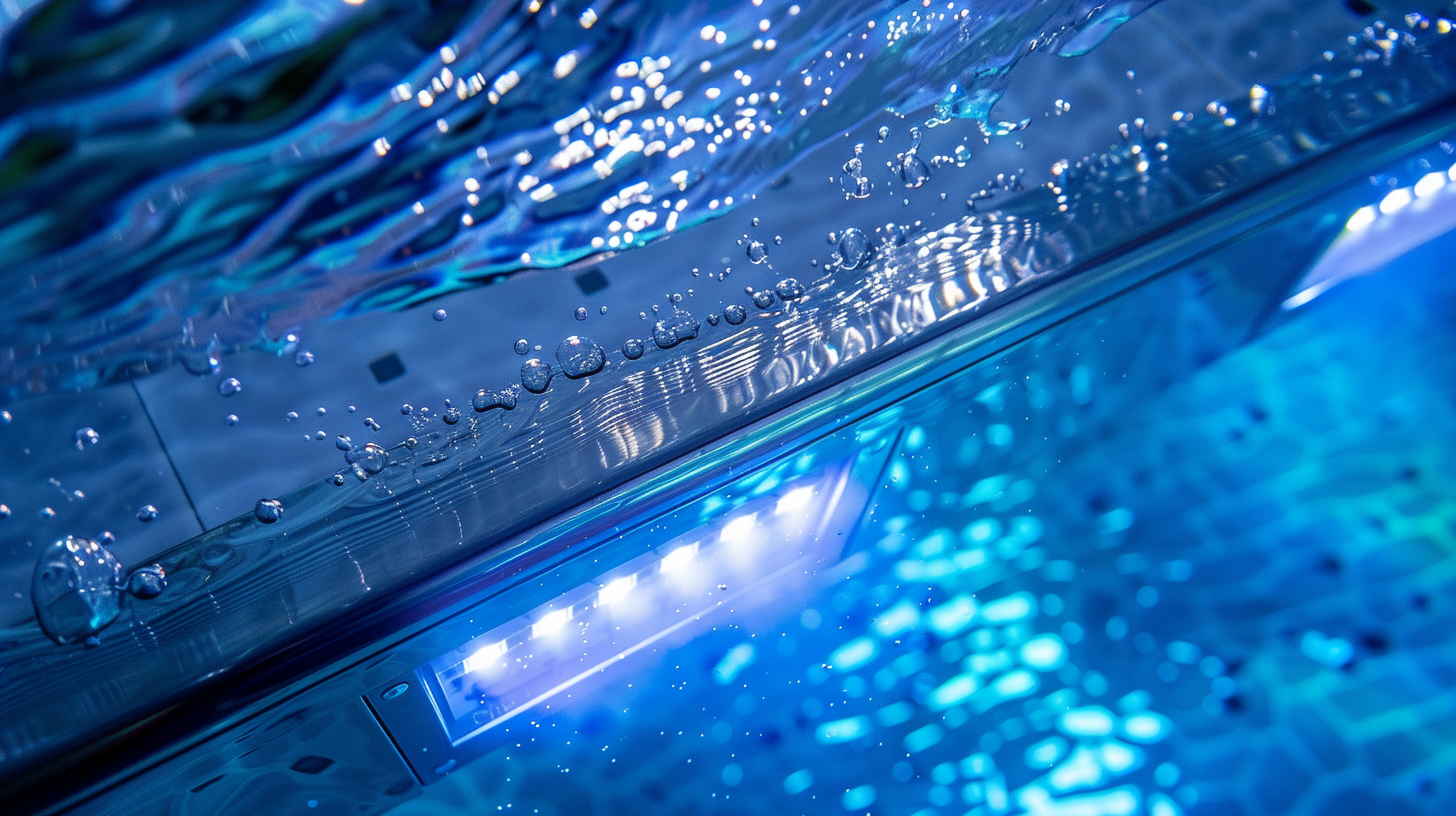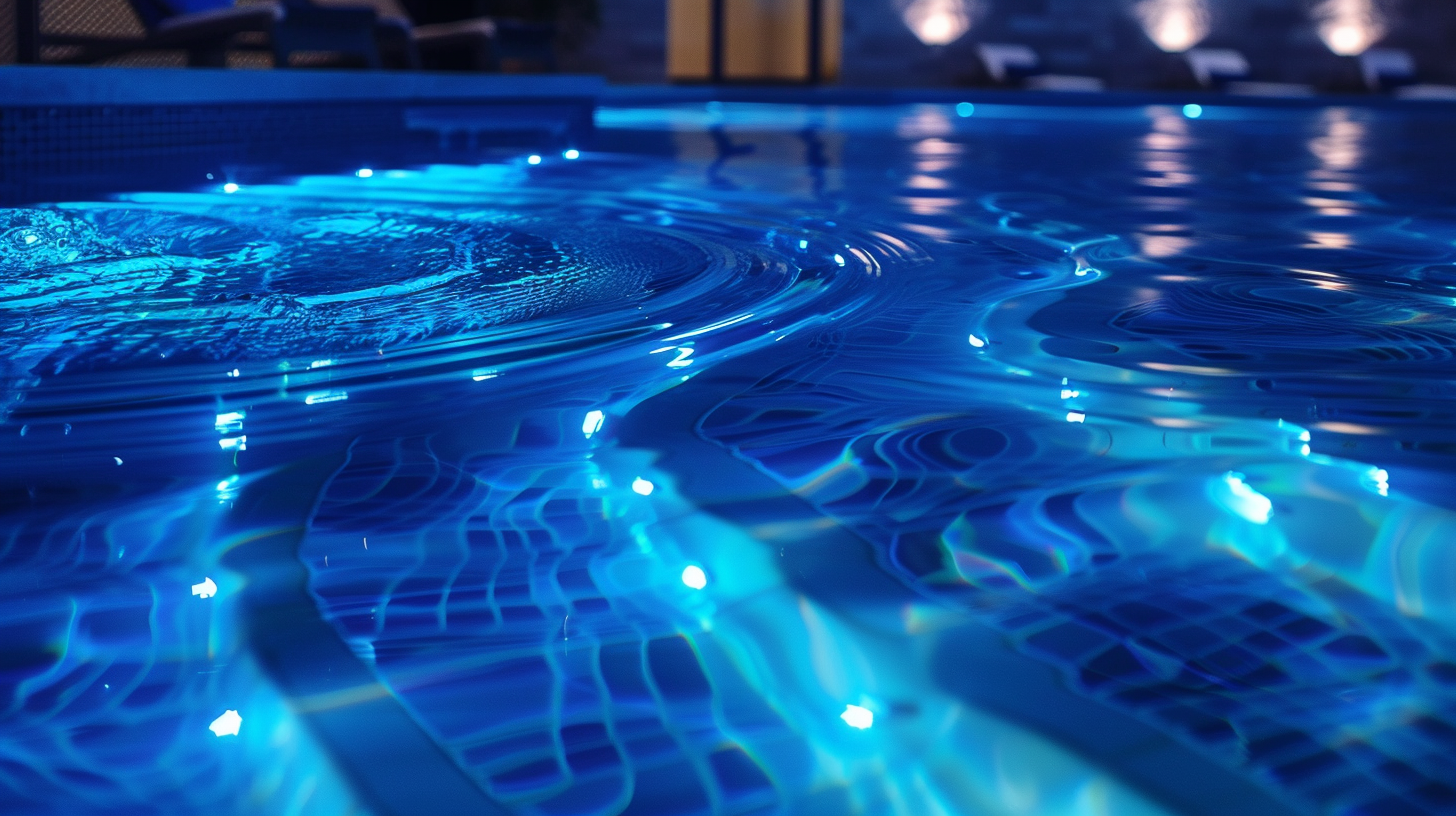Underwater pool lights for small pools
When it comes to enhancing the visual appeal and functionality of small pools, understanding the various types of underwater pool lights can make a significant difference. There are several varieties to choose from that can transform your pool into a mesmerizing oasis. Let’s dive into the most popular options available.
LED lights are among the most favored choices for underwater pool lighting, and for good reason. Not only are they energy-efficient, but they also offer a wide spectrum of colors, allowing for dynamic lighting effects that can be customized to match your mood or event. LEDs have a long lifespan, which means less frequent replacements and lower maintenance costs over time.
For those seeking a bit of nostalgia, halogen lights can provide a classic, warm glow to the pool area. Although not as energy-efficient as LEDs, halogen lights are less expensive upfront and offer a bright and crisp light. However, they tend to have a shorter operational life and can generate more heat.
Another interesting choice for underwater lighting is fiber optic lights. These systems use a light source housed in a dry box, with fibers carrying the light to its underwater destination. The primary advantage here is safety, as there’s no electricity running directly to the pool light itself. Also, the light color and intensity can be easily changed by swapping out the light source filters.
Fluorescent lights, though less common for underwater applications, can still be found in some designs. They offer good energy efficiency and produce less heat compared to halogen lights. However, their light is usually not as dynamic or bright as that provided by LEDs or halogens.
When considering underwater pool lights for small pools, it’s essential to weigh the initial cost, energy efficiency, maintenance needs, and the overall aesthetic you wish to achieve. Each type of lighting offers its unique benefits, helping you create the perfect ambiance for nighttime swims and outdoor gatherings.
Benefits of underwater lighting
Imagine transforming your small pool into a luminous aquatic paradise after the sun goes down. The primary benefit of installing underwater pool lights is the enhanced aesthetic appeal. These lights can highlight the architectural features of your pool, casting glamorous reflections and creating a stunning atmosphere for evening swims and poolside gatherings. The variety of colors and lighting effects available, especially with LED lights, allows you to set the mood, be it for a festive party, a romantic evening, or a quiet, relaxing night.
Beyond beautifying your pool, underwater pool lights also significantly improve safety. Proper lighting ensures that swimmers can clearly see the pool edges, steps, and any potential obstacles, reducing the risk of accidents. This is particularly important for small pools, where space is limited, and it’s easy to inadvertently bump into something. Illuminating the pool also lets you keep an eye on swimmers, especially children, providing peace of mind for parents and guardians.
Functionality is another key advantage. With adequate underwater pool lighting, your pool becomes a usable space even after dusk. Whether you’re hosting an evening pool party, enjoying a late-night swim, or simply extending your poolside reading time, good lighting ensures that your small pool remains a functional retreat at any hour.
Underwater pool lights also contribute to the overall ambiance of your backyard. They can highlight landscaping features, such as water plants, fountains, or adjacent hardscape elements like patios and pathways. This multifunctional use of pool lights can boost the curb appeal of your property, creating an inviting and luxurious atmosphere that friends and neighbors will admire.
Additionally, modern LED underwater pool lights are designed to be energy-efficient, helping you save on electricity bills. These lights consume less power compared to traditional halogen or fluorescent options, while offering a longer lifespan. This not only makes them a go-to choice for environmental sustainability but also means less frequent replacement and lower maintenance costs.
The benefits of underwater pool lights extend far beyond mere illumination. They enhance the aesthetic appeal, safety, functionality, and ambiance of small pools, making them an indispensable upgrade for any pool owner looking to make the most out of their backyard oasis. These lights allow you to dive into a world of possibilities, turning your pool into a sparkling centerpiece that can be enjoyed day and night.
Installation tips for small pools
Installing underwater pool lights in small pools requires careful planning to make sure you achieve the perfect balance of functionality and aesthetics. First and foremost, consider the size and shape of your pool, as this will dictate the number of lights needed and their optimal placement. For small pools, fewer lights may be required, but strategic positioning is crucial. Placing lights at opposite ends or along the pool’s edges can help ensure even illumination, avoiding dark spots that could detract from the overall effect.
Start by mapping out your pool’s layout and identifying key areas that need illumination, such as steps, corners, and any unique features like waterfalls or fountains. If your pool has a complex shape, consider using smaller lights with a focused beam for highlighting specific areas while using broader beam lights for general illumination. This tailored approach will enhance both the safety and beauty of your pool.
The next step involves selecting the right type of underwater pool lights. LEDs are often the best choice for small pools due to their energy efficiency, brightness, and color versatility. They allow for more creative lighting designs and require less maintenance, which is a big plus for small pool owners. Before installation, verify that the lights are suitable for underwater use and are rated for the depth and size of your pool.
Prepare the pool surface, ensuring it’s clean and smooth to promote a secure installation. If you’re replacing existing lights, it’s essential to check the condition of the existing wiring and fixtures. For new installations, lay out the wiring and conduits, keeping safety at the forefront. Use waterproof connectors and junction boxes to prevent electrical hazards.
When actually installing the lights, follow the manufacturer’s instructions closely. Typically, this involves drilling holes precisely where the lights will be placed, securing the fixture, and ensuring it’s watertight. Pay special attention to sealing to prevent leaks. If you’re not confident in tackling this yourself, it’s advisable to hire a professional. Proper installation is key to the long-term performance and safety of your pool lights.
Consider installing a control system that allows you to manage the lighting remotely. Many modern LED systems come with options to change colors, intensity, and light patterns through a user-friendly app or remote control. This flexibility can transform your small pool into a dynamic space for different occasions, from tranquil evening swims to vibrant pool parties.
Conduct a thorough test of all lights before filling the pool back up if you had to drain it for installation. Check for even lighting, color accuracy, and make sure all fixtures are securely in place and watertight. Once satisfied, enjoy your newly illuminated pool, which is now not only a safe and functional space but also a visually stunning addition to your backyard.
Safety considerations
Ensuring the safety of your pool is paramount, especially when integrating underwater pool lights. Even more so for small pools, where the proximity of lights to swimmers can conjure unique considerations. Here are some pivotal safety measures to implement:
Proper electrical grounding of underwater pool lights is essential. Grounding diminishes the risk of electrical shock, a significant concern for all pools, including small ones. When installing or replacing lights, ensure that the electrical systems comply with the current standards outlined by organizations such as the National Electrical Code (NEC). It’s advisable to employ a certified electrician to verify all installations, which safeguards against many potential hazards.
Equally important is the use of Ground Fault Circuit Interrupters (GFCIs). These devices immediately cut off power if they detect irregularities such as moisture near electrical circuits, drastically reducing the risk of electric shock. Ensure that all pool lighting systems are GFCI-protected, ideally tested monthly to confirm their efficacy.
The selection of certified underwater pool lights is crucial. When purchasing lights, ensure they are specifically rated for pool use and have passed rigorous safety testing, meeting standards from recognized testing agencies like Underwriters Laboratories (UL). Underwater pool lights that are UL-rated provide an additional layer of security, guaranteeing that they have undergone stringent evaluation for aquatic environments.
Installation depth also impacts safety. Always adhere to the manufacturer’s recommendations for the minimum and maximum installation depths. Positioned too shallow, the lights can cause glare, obstructing swimmers’ vision. Conversely, overly deep installations can overstrain light performance. For small pools, the balance is particularly delicate, requiring careful adherence to these guidelines.
Another aspect to consider is wire management. Cover all exposed wiring with durable, waterproof conduits to shield them from water exposure and physical damage. Route the conduits away from foot traffic and other external elements that could compromise their integrity. Proper wire management also includes periodic inspections, ensuring no signs of wear, corrosion, or damage, which could precede hazardous conditions.
Ventilation within the light niche should not be neglected. Poor ventilation can lead to overheating, potentially causing light failure or worse, creating a fire risk. Although small pools tend to have less complex lighting systems, making ventilation a straightforward task, it’s still vital to ensure that each fixture has ample airflow to maintain safe operating temperatures.
Routine maintenance and check-ups form the backbone of a safe lighting system. Schedule regular inspections to monitor the wear and tear of light fixtures, electrical connections, and wiring. Focus on detecting any discoloration, rust, or bulb performance issues. Promptly replace any components that exhibit signs of deterioration.
Protecting young swimmers involves mindfulness of light placement. Avoid placing lights or wiring in reachable areas for children, preventing the risk of tampering. Teach children about the importance of not playing with pool lights or electrical equipment, promoting a culture of safety from an early age.
By conscientiously applying these safety practices, you ensure that the allure and functionality of underwater pool lights are enjoyed without compromising well-being. Whether you’re relaxing or entertaining, your elegantly lit small pool can serve as a secure and enchanting retreat.
Maintenance and care
Regular maintenance and care of underwater pool lights are crucial to ensure their longevity and optimal performance, especially in small pools where the impact of any malfunction can be more pronounced. Begin with a consistent cleaning routine. Submerged lights can accumulate debris, algae, and mineral deposits that cloud their brightness. Periodically cleaning the lenses with a soft brush or cloth and a non-abrasive cleaner will help keep them clear and efficient. Make sure the pool’s water chemistry is balanced, as improper pH levels can lead to scale buildup on the lights. This is particularly important for small pools, where water balance can fluctuate more rapidly.
Inspect the lights regularly for any signs of wear and tear. Look for cracks in the lenses or housing, signs of corrosion, and ensure the seals are intact to prevent water ingress. If you notice any moisture inside the light, address it immediately, as this could indicate a compromised seal or gasket. Replacing worn seals and gaskets promptly will help keep the lights watertight and functioning correctly.
Changing bulbs in underwater pool lights might seem daunting, but it’s relatively straightforward with the right preparation. Make sure to purchase the correct replacement bulb that matches the specifications of your existing light fixture. Always turn off the power supply before attempting any replacements. For most fixtures, you’ll need to remove the light from the niche, bring it to the pool edge, and replace the bulb. Check your manufacturer’s instructions for specific guidelines, as incorrect handling can damage the fixture or the bulb.
The electrical components of your underwater pool lights also require attention. Check the integrity of the wiring and connections periodically. Look for signs of wear, such as fraying or discoloration, which could indicate potential failure. Tighten any loose connections and use waterproof connectors to safeguard against water exposure. If you’re not comfortable performing these checks, enlisting the help of a professional electrician is a wise move to ensure everything is in top condition.
LED lights, a popular choice for small pools due to their energy efficiency and long lifespan, also need periodic maintenance. Despite being more low-maintenance than other lighting options, it’s still essential to monitor their performance. LEDs typically last for many years, but if you notice a significant drop in brightness or color accuracy, it may be time to replace the bulbs or the fixture itself. Since LED units often come with integrated bulbs, replacing these might involve swapping out the entire unit.
Don’t overlook the importance of keeping the light’s control systems in good working order. For remote-controlled or app-managed lighting systems, ensure the software is up to date and the control modules are functioning correctly. Regularly test all features, including color-changing settings, timers, and dimmers, to verify they are performing as expected. This preventive check can save you from potential disruptions, especially before hosting gatherings or events by the pool.
Maintaining underwater pool lights doesn’t end with the fixtures themselves. Consider the overall pool environment. Keeping the pool water clean and free from debris reduces the strain on your lighting system and enhances the visual effect. Cover your pool when it’s not in use to minimize dirt and algae formation and extend the lifespan of your lights.
By adhering to a regular maintenance and care schedule, you ensure that your underwater pool lights remain a vibrant and integral feature of your pool. This proactive approach not only enhances the aesthetic and functional qualities of your small pool but also contributes to a safe and enjoyable swimming environment for years to come. Whether you’re enjoying a quiet evening swim or dazzling guests with a poolside party, well-maintained lights make all the difference.


